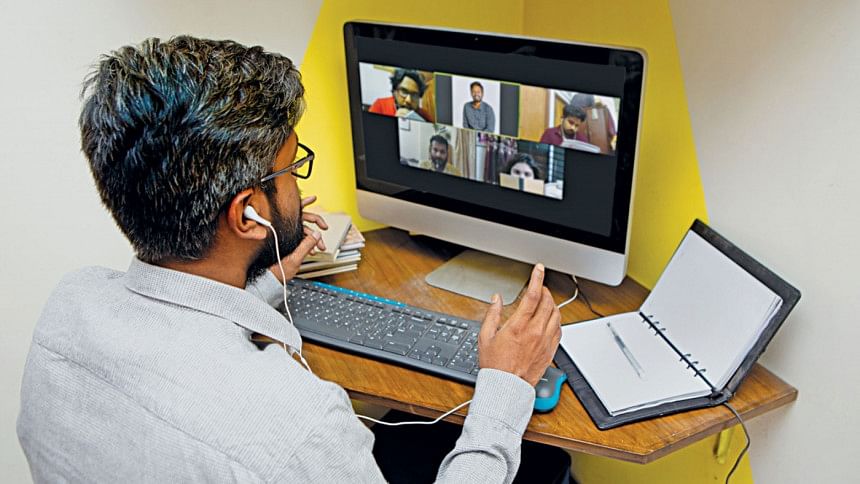The good, the bad, the ugly of distance learning

One of the key changes wrought into the fabric of our lives after the coronavirus outbreak has been regarding education and the prevailing systems of education.
With forced social isolation and a desperate switch to distance learning set to bring about a paradigm shift in our education systems, it is imperative that we take a look at the various effects this transition might have on all parties involved, especially students' learning and health.
During regular times, the typical day for a student is filled with routine lessons and tests. But besides that, young children and even older students look forward to seeing their friends and peers.
Online classes largely deprive them of these interactions. One of their top criticisms against online learning is that "it is not as enjoyable".
"I miss talking to my friends," said a fifth-grader, terming it her least favourite thing about online classes.
Teachers, however, have a different set of challenges than just making learning more enjoyable. Without the help of all the communication and body language cues that can be employed in a physical setting, holding a student's attention can be difficult.
On top of this, many students and their families maybe stressed out from the pandemic situation, which makes imparting effective lessons a whole different ballgame.
Another important aspect that affects students and teachers is the additional screen time.
Generally, it is advised that children's screen time be limited to one or a maximum of two hours a day, depending on their age and the content being consumed.
Concerns about this have been raised the world over. India's state of Karnataka even banned online classes for children up to standard five, taking into consideration experts' warnings.
Also, as physical activities are severely restricted, many students are also struggling with staying healthy.
"I do school classes till the afternoon, and then coaching classes in the evening, all online. That's a lot of hours spent in the same spot, with little to no real break. I have not played outside in months. I have gained weight, and don't feel very fit," said an 11th grader.
For parents, online classes are a good thing, albeit with complications. It keeps children engaged and actively learning. But the burden of managing timings, websites, apps and passwords can be quite tiresome.
"My son is a very active child, but he normally doesn't study on his own, so I have to supervise his online classes. It is very worrying how he ends up spending a lot of time on the computer due to online classes and leisure activities," a private university teacher said.
"It gets overwhelming to do my own job and then monitor the classes of my two children," she added.
Even though distance learning promises a lot of conveniences, these accounts show that it doesn't come without its own problems. Given that online learning is set to play a more significant role in what is becoming the new normal, it may be time for educators, health experts, and policy makers to come up with a comprehensive guideline on how to go on about it, with detailed discourse on class cycle duration, timings, level of work and progress assessments, and most importantly, consideration for students' mental and physical capacities.
(Names of the interviewees have been withheld upon requests for privacy)

 For all latest news, follow The Daily Star's Google News channel.
For all latest news, follow The Daily Star's Google News channel. 



Comments